
Posted on 04/18/2012 4:34:56 AM PDT by Homer_J_Simpson

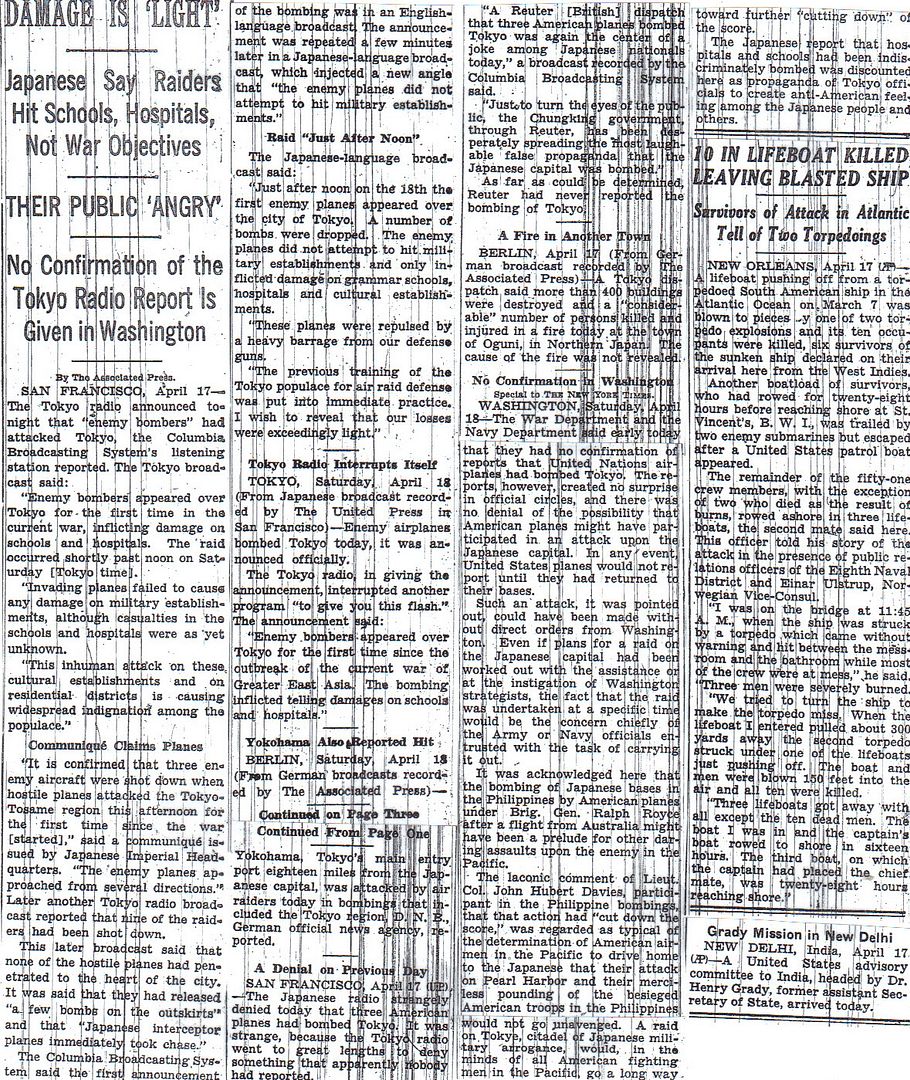
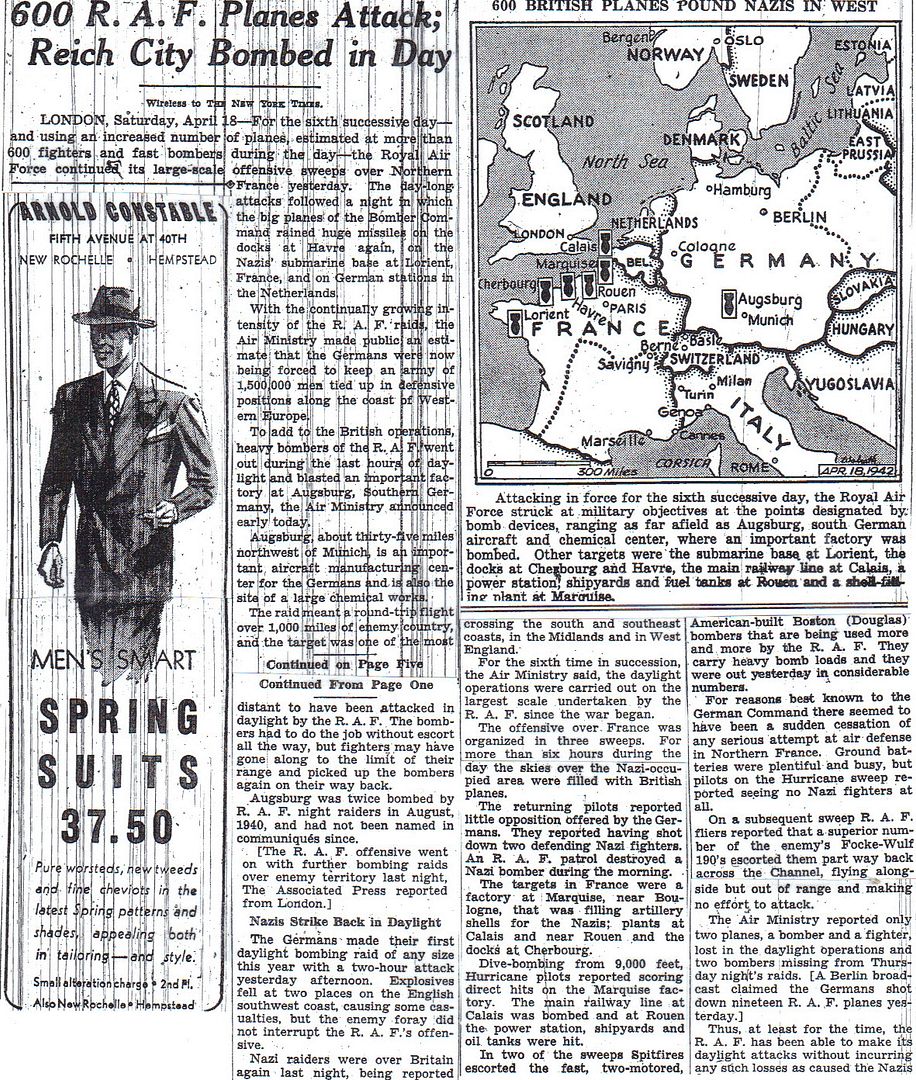
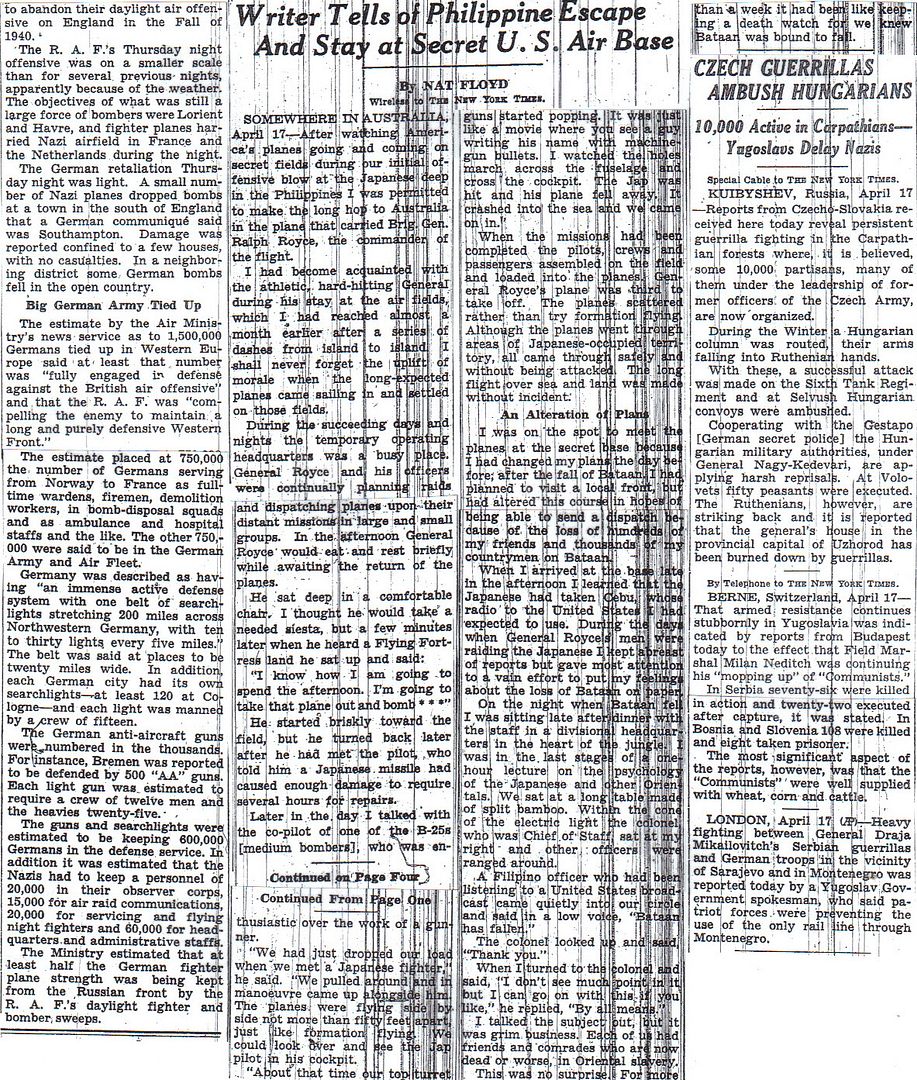
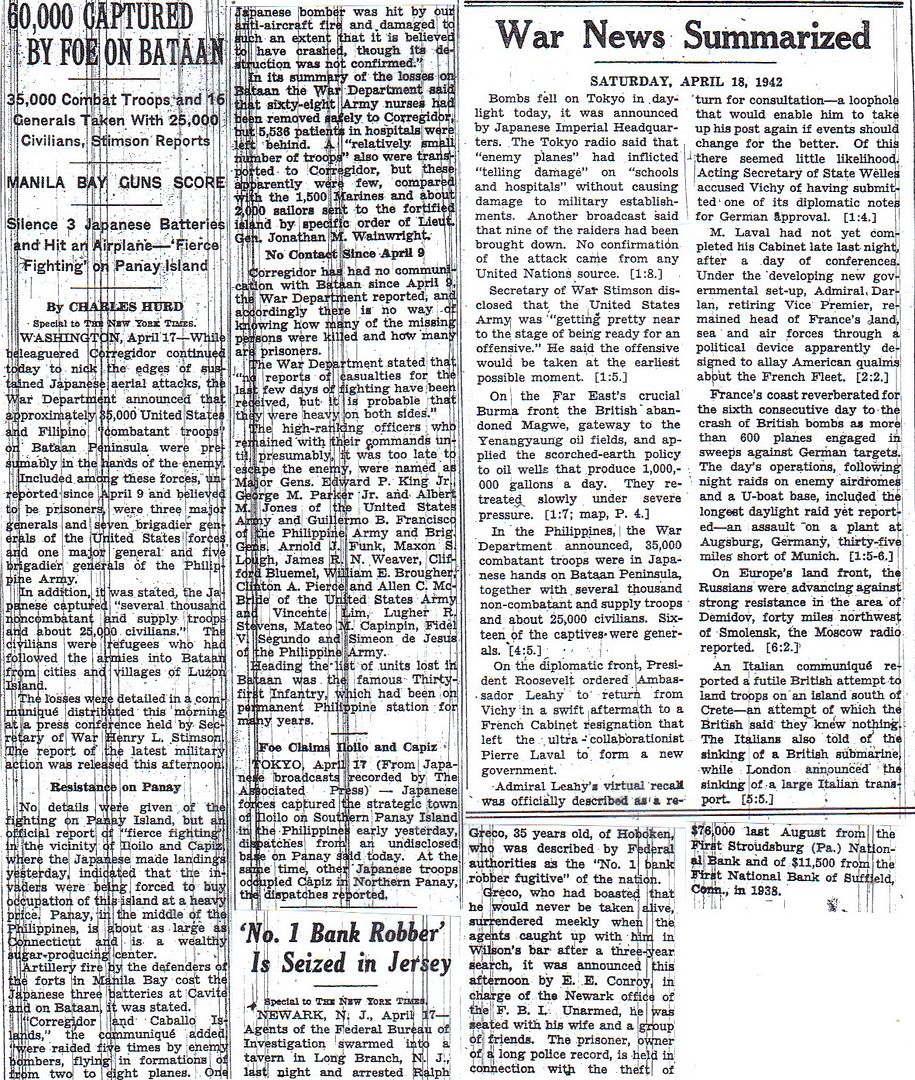
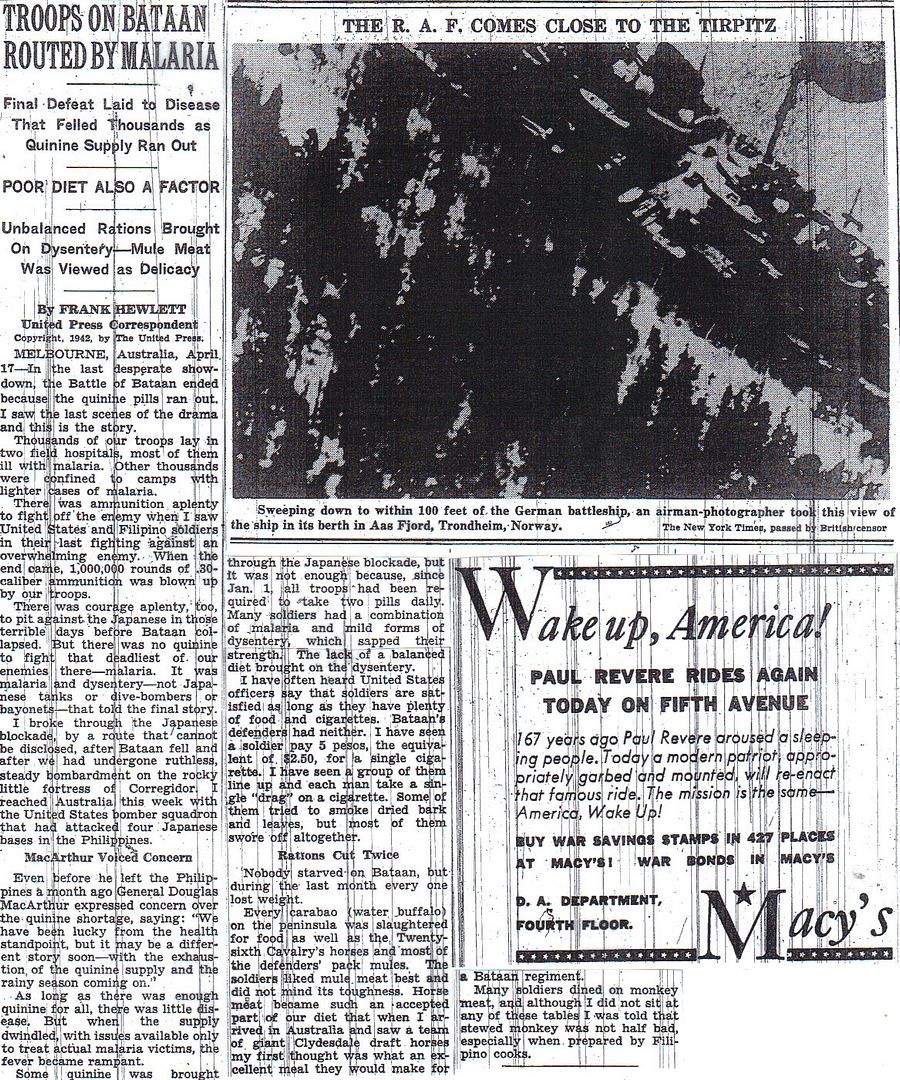
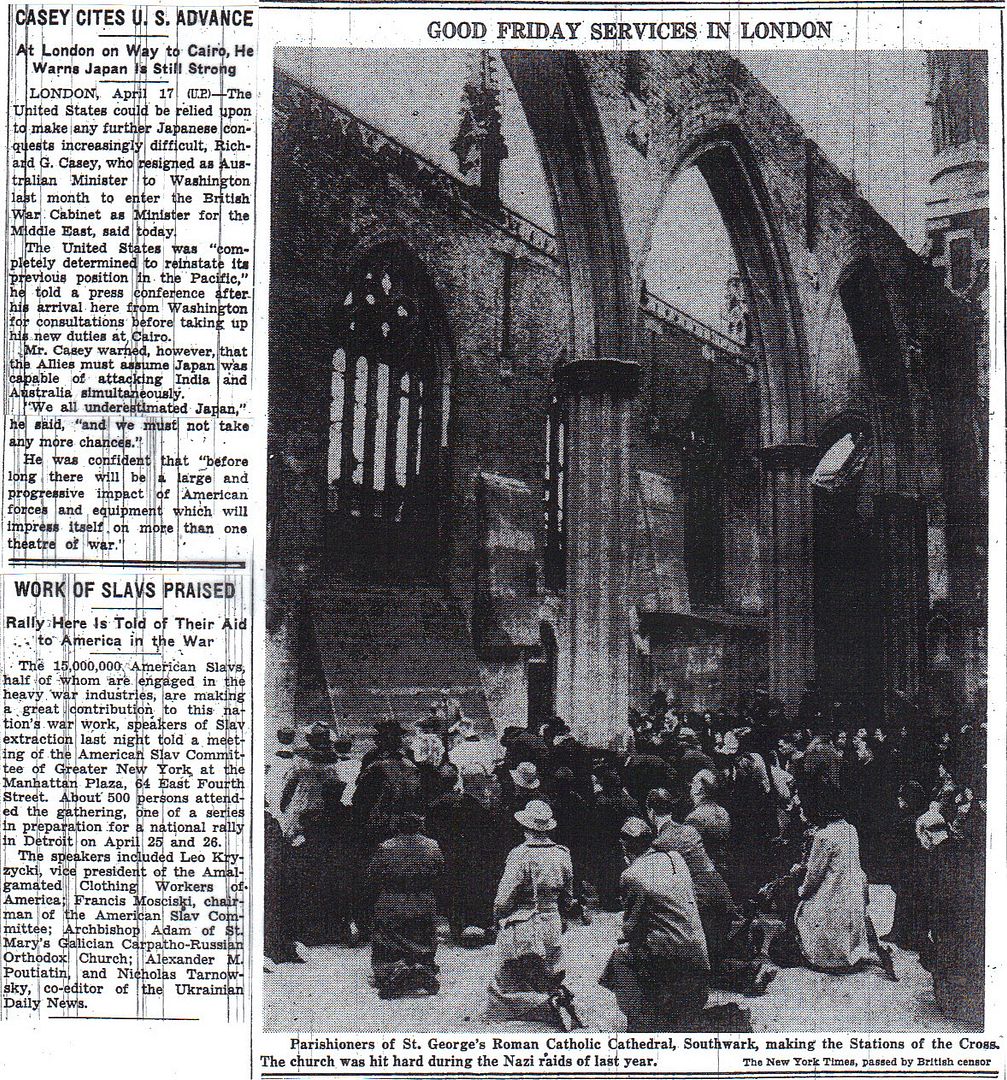
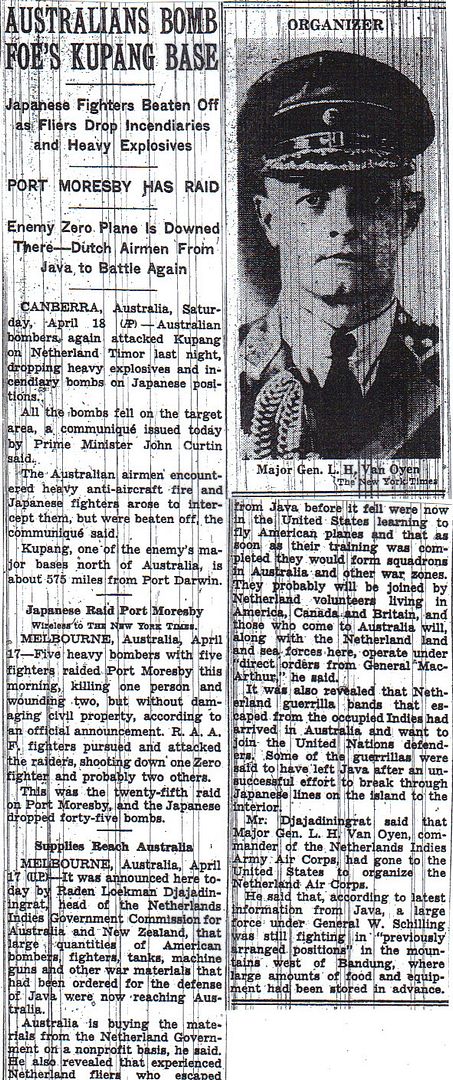
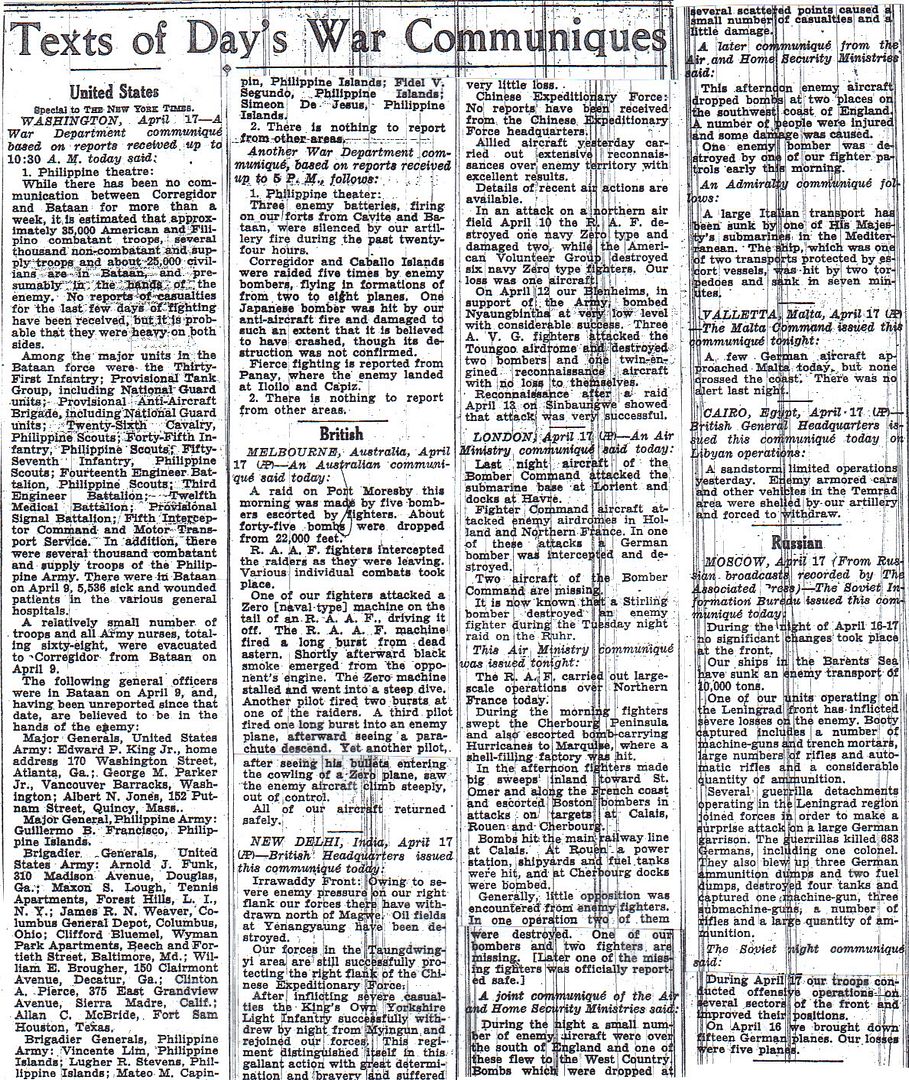
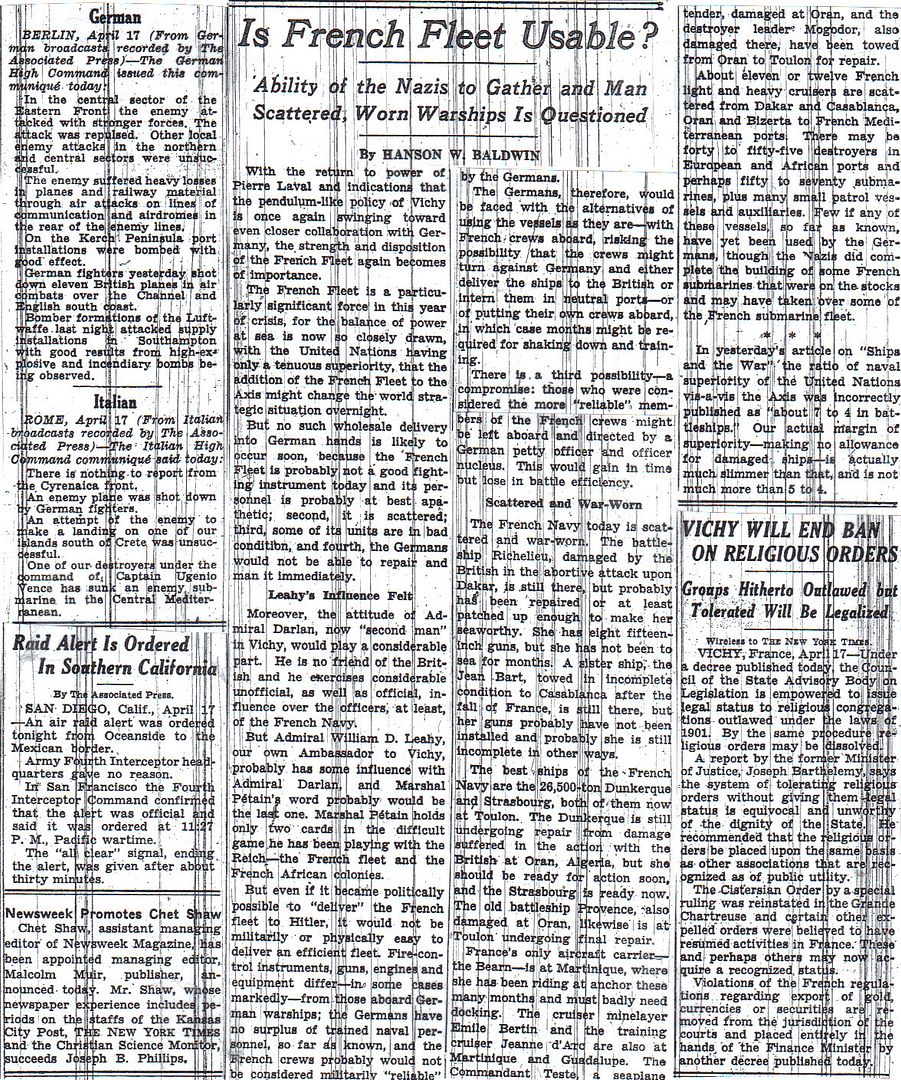
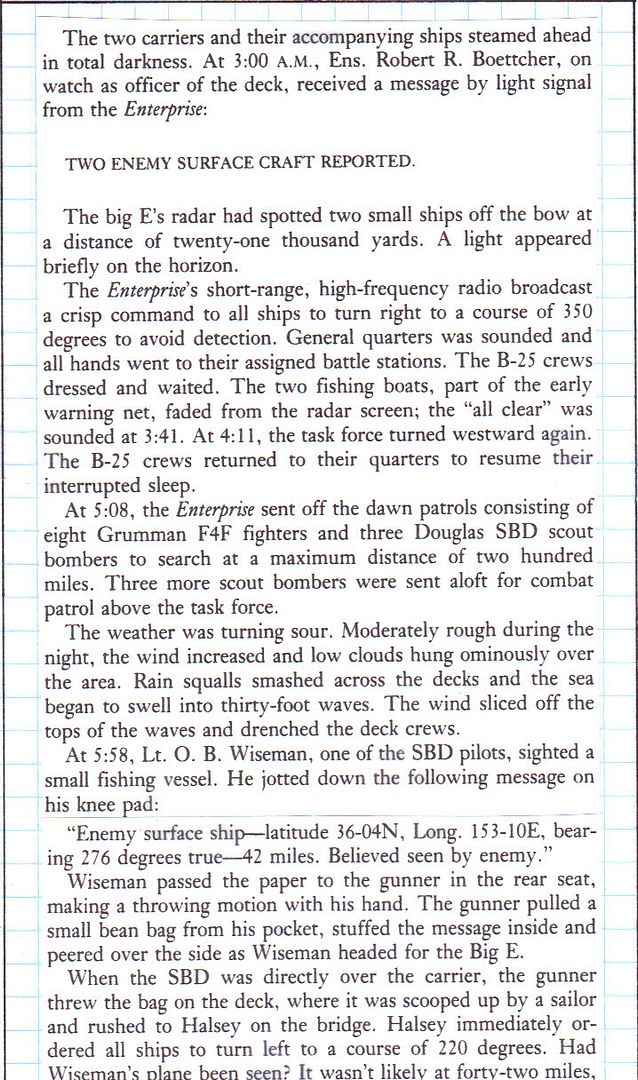
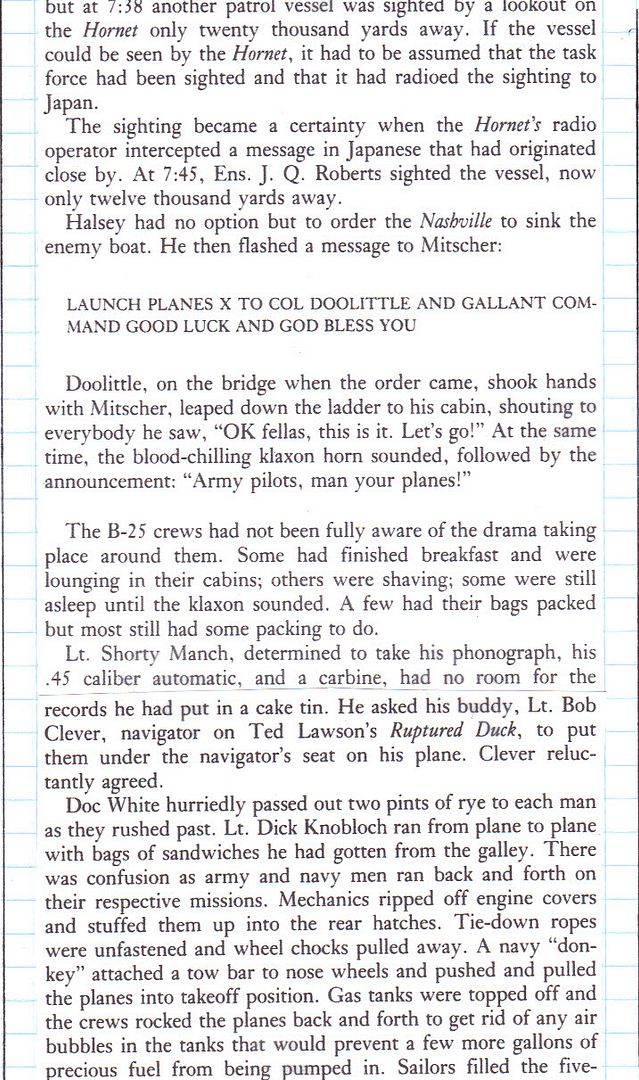
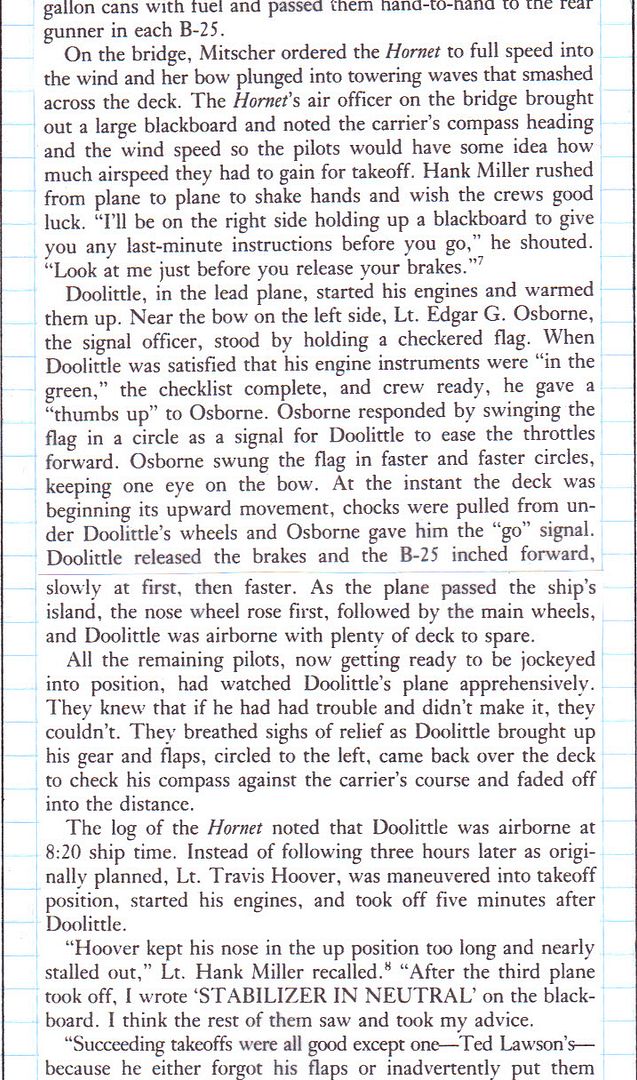
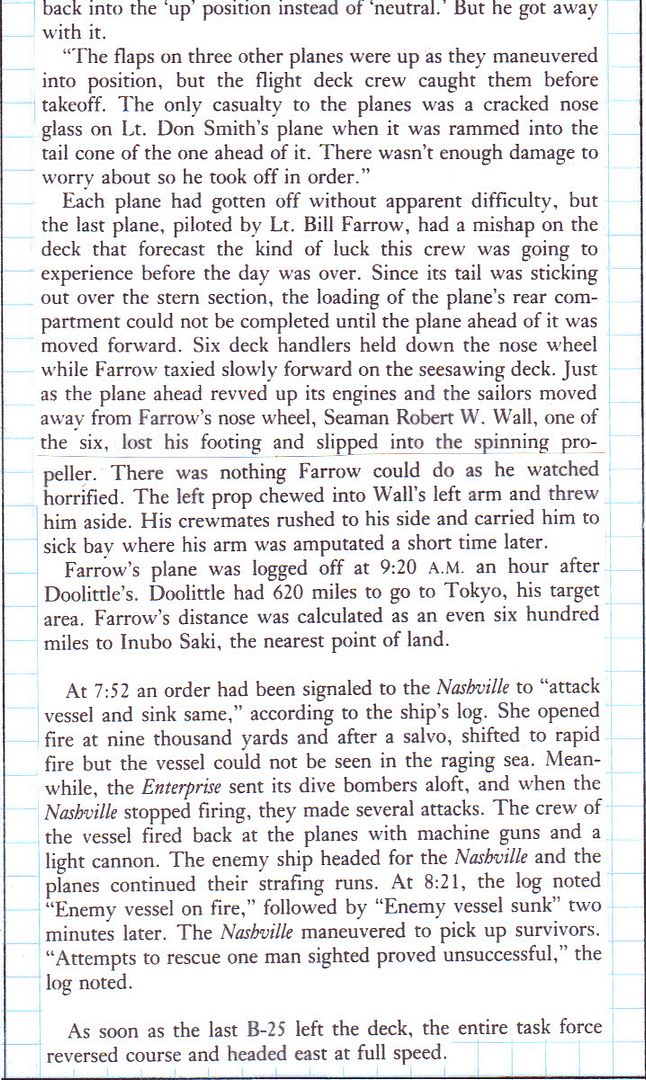
Carroll V. Glines, The Doolittle Raid
Doolittle Raid Launch Footage (9:29)
Today’s excerpt ends with the launching of the B-25’s from the deck of the Hornet. As you might imagine there are several chapters that cover the next 24 hours of the story. You will have to buy the book if you want the details. It is a good investment, in my strictly nonacademic opinion. The author, Carroll V. Glines got most of his information first-hand from participants in the raid. He was an Air Force pilot first and a writer second. Once on a flight he talked to a former Doolittle raid crew member who was still flying and decided to write their story.
As time permits I will search out more excerpts as we move along the timeline that never rests – Homer.
Pvt [Censored]
Co. D, CASC #1930
Presidio of Monterey
California
Money quote: “Will you save these letters I write?”
Yeah, in case your future son wants to post them on the internet seventy years from now.
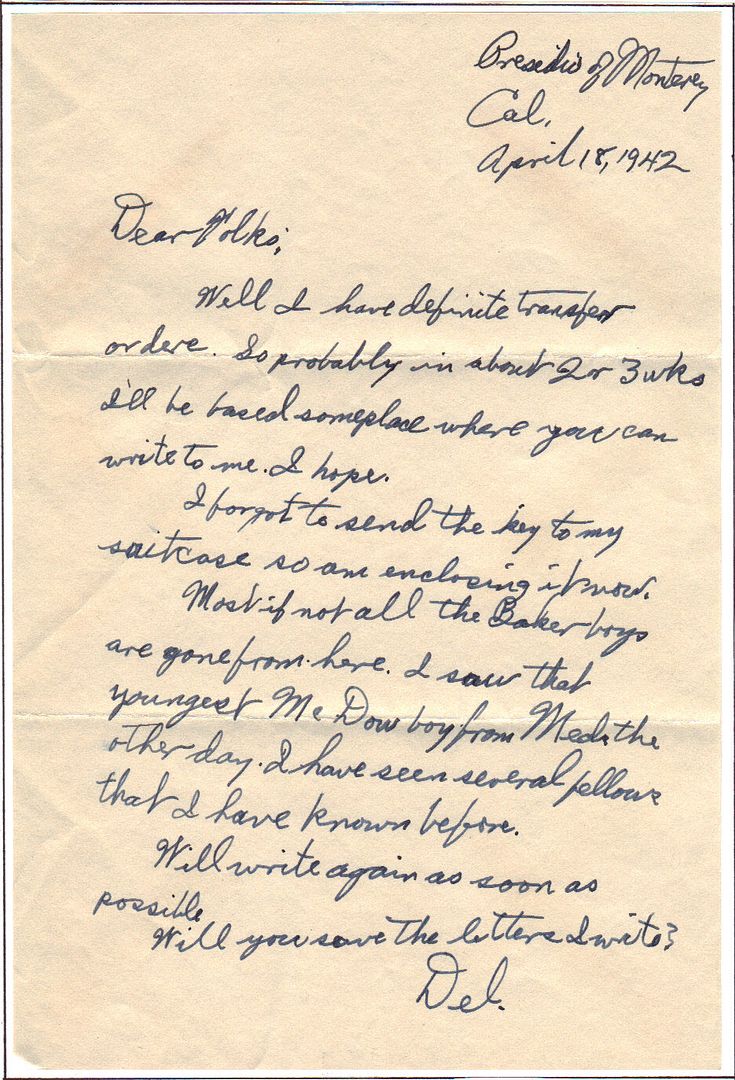
http://www.onwar.com/chrono/1942/apr42/f18apr42.htm
Doolittle raids Tokyo
Saturday, April 18, 1942 www.onwar.com
Over Japan... Doolittle’s Raid on Tokyo. From the decks of the USS Hornet, Col. Doolittle leads 16 B-25 bombers for a raid on Tokyo. They launch from the maximum range, 650 miles from their target. Essentially unarmed to extend their flying range, the B-25’s fly unmolested to Tokyo and drop their bombs, proceeding to China where they land at the very limits of their fuel. Although the bombing does minimal damage physically, the psychological impact is great. For the Americans, this raid symbolizes the first “strike back” at the Japanese and raises American morale substantially. The Japanese, buoyed by their constant success in the Pacific are now forced to contemplate the implications of the war if it is allowed to be carried to Japanese soil. This change in Japanese attitude will affect military decisions in such crucial battles as the battle of Midway and the Coral Sea. For the Americans, the raid signifies that the Japanese are not invulnerable and therefore can ultimately be defeated.
From Berlin... General Von Leeb is removed for the command of Army Group North which has been besieging Leningrad. He is replaced by General Kuchler. This is the third removal since December 1941 and now all three Army Groups have changed commanders.
In Burma... The Japanese 56th Division decimates the Chinese 55th Division during its retreat from Mauchi. The road to Lashio is now undefended. Its importance lies in the fact that it is a terminus for the Burma Road. Chinese troops are also forced to withdraw from the Sittang Valley.
http://homepage.ntlworld.com/andrew.etherington/frame.htm
April 18th, 1942
UNITED KINGDOM: London: Vyacheslav Molotov, Stalin’s foreign minister, is on his way to London to demand an Anglo-American invasion of Europe to relieve the hard-pressed Soviet forces battling with the Germans along a 1,000-mile front. The unsmiling Molotov will be gratified to see the slogan chalked on the walls of the capital, on bombed buildings and on railway bridges everywhere, by the obedient British communists: SECOND FRONT NOW!
The Communists, who only a few months ago were preaching defeatism, now have curious allies: Lord Beaverbrook, who was in Churchill’s cabinet until a few weeks ago, has ordered his Daily Express newspapers to call for a second front; and the Americans, led by General George C Marshall, the chief of staff, and Henry Stimson, the secretary for war, are pressing Churchill to agree to a direct onslaught.
There are mixed motives at work. The Communists, as usual, are taking orders from Moscow, but they are also out to embarrass the Labour ministers in the government, by making them appear lukewarm in support of the Soviet Union. Beaverbrook, the Canadian with a liking for baiting Americans, is simply mischief-making when he praises Stalin for producing “the best generals of this war.”
The Americans are Churchill’s main problem. They want to see some action, but the British believe they greatly underestimate the resources in men and materials needed to secure a foothold in Europe. As he cannot oppose them directly. Churchill has agreed to the setting up of an Anglo-American staff to plan for a European assault.
But Churchill believes that the Allies should first drive the Germans out of North Africa and then open the Second Front in Italy - the soft under-belly of the Axis, as he calls it.
FRANCE: Pierre Laval, dismissed as vice-premier by Marshal Petain in December 1940, will soon be back in control in Vichy under Petain. Laval is to be named tomorrow as not only head of the government but also minister of foreign affairs, the interior and information.
The Nazis were impatient with Admiral Darlan, whom Laval will replace, not least for his incompetent handling of the Riom war guilt trial. Laval’s return to favour has been caused by German pressure. It will leave Petain as increasingly a figurehead for the Vichy regime.
BURMA: Mauchi: Japanese soldiers of the IJA 56th Division destroy the Chinese 55th Division, and the supply road to Lashio, the eastern terminus of the Burma Road, is captured.
Two American Volunteer Group P-40s down a Japanese reconnaissance aircraft over Loiwing at 1300 hours local.
JAPAN: A totally unexpected air raid today by American bombers on large Japanese cities, including Tokyo, has shocked Japan. The raid, by 16 Mitchell B-25 bombers, was launched from the deck of the American aircraft carrier USS HORNET some 650 miles from Tokyo.
After completing their bombing runs, all 16 aircraft cleared the Japanese home islands and continued westwards towards the coast of China. The raid was planned deliberately as a psychological shock to the Japanese and a much needed boost to sagging Allied morale which has suffered from a cataract of military disasters since the Pacific war began. The US Army Air Force crews volunteered and trained vigorously in secret for this unorthodox and dangerous mission. To take off from the deck of an aircraft carrier with the very heavy fuel load required as well as bombs was a problem never before encountered by army pilots.
Off Pearl Harbor the USS HORNET was joined by an escort force which included the carrier USS ENTERPRISE. Col. Doolittle is the first to take off. William Farrow pilots the last B-25 off the deck. The propeller on Farrow’s aircraft struck a Hornet deckhand resulting in an amputation. (John Nicholas)
The raiding B-25s were unopposed when they crossed the Japanese coast. The raid was led by General James Doolittle. His plane roared over Tokyo at a height of 1,200 feet just as an air-raid practice ended and the barrage balloons had been winched down. He dropped his incendiaries before the real alarm was sounded. Over China it was night and the weather was bad. A few pilots force landed their planes and of 63 crewmen who parachuted, five died and eight were captured. The raid has caused little material damage but has boosted Allied morale. It throws weight to Admiral Yamamoto’s plan to attack Midway Island. The Japanese are unaware of the source of this raid. President Roosevelt refers to Shangri-La in a radio broadcast.
The US submarine USS Searaven (SS-196), which arrived off Japanese-held Timor Island, Netherlands East Indies (8.35S, 126.00E) yesterday evening, rescues 32 Royal Australian Air Force airmen from the island. (Jack McKillop)
Also RAAF Hudsons drop supplies to the Australian troops fighting a guerrilla war from the hills of the island. (William L. Howard)(188, 189, 190, 191)
AUSTRALIA: General Douglas MacArthur assumes command of the Southwest Pacific Area. The staff of the new command is: Australian General Thomas Blamey, Commander of Allied Land Forces; USAAF Lieutenant General George H Brett, Commander of Allied Air Forces; USN Vice Admiral Herbert F Leary, Commander of Allied Naval Forces; US Army Lieutenant General Jonathan M Wainwright, Commander of Forces in the Philippines; and US Army Major General Julian F Barnes, Commander of US Army Forces in Australia. The Allied Air Forces had command all USAAF tactical and associated service units in Australia, and operational control, except for training, of the Royal Australian Air Force and the Royal Netherlands East Indies Air Force. In reality General MacArthur kept Blamey from having control over United States land forces in the Pacific during World War II. (Jack McKillop)
U.S.A.: Due to the fear of a Japanese attack, west coast military leaders ask baseball’s Pacific Coast League teams to limit crowds to 3,000 fans.
The USN orders a blackout of waterfront lights along the eastern seaboard, where German U-boats have been using the illumination to silhouette their targets. (Jack McKillop)
Homer
Thank you. I am touched that you would share these family treasures.
Your Dad was clever and historically minded. My Dad's family didn't save anything, didn't have a camera.
(Of course, they were busy trying to pay the bills.)
Looks like Doolittles raid was the beginning of the end for the Japanese. Midway didn't go to well for them.
I figure this may be the last time they see the light of day. Even I don’t take them out to read them much any more.
On April 19, see new video and stories from the celebration at U.S. Air Force Museum at Wright Patterson Air Force Base marking the 70th anniversary of the Doolittle Raid and video from inside a restored B-25B bomber.
As good a way as any to maintain radio silence. At that point they still hadn’t been sighted by the Japanese.
Incredible foresight. Thanks for posting these.
Don’t overlook the article about the “secret U.S. Air Base” on page 4. I think it concerns the landing field you guys were discussing yesterday.
Yep. Definitely the Del Monte airfields in that article.
Thanks for sharing these letters, Homer.
Such a treasure for your family.
Can you frmail me a link to the other two letters?
Thanks.
Disclaimer: Opinions posted on Free Republic are those of the individual posters and do not necessarily represent the opinion of Free Republic or its management. All materials posted herein are protected by copyright law and the exemption for fair use of copyrighted works.